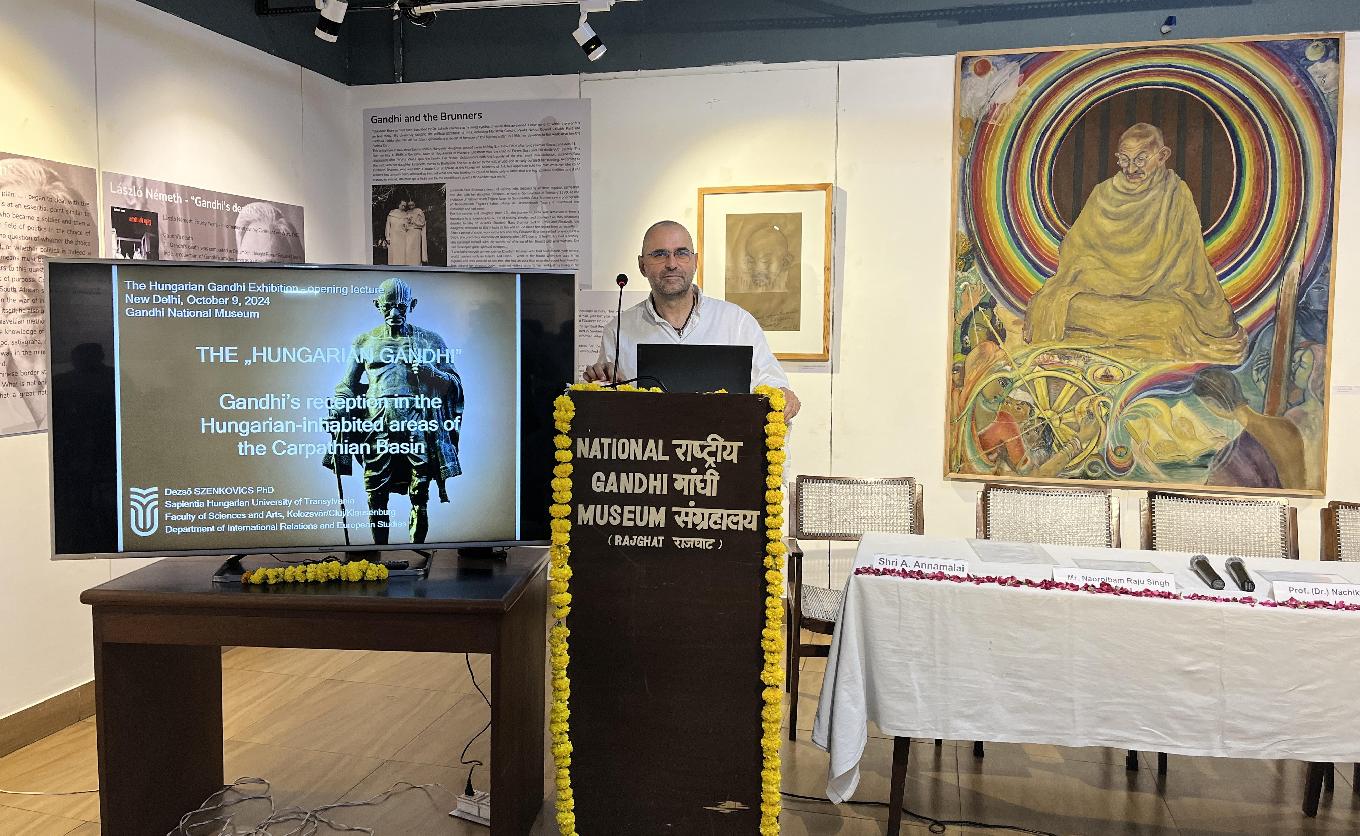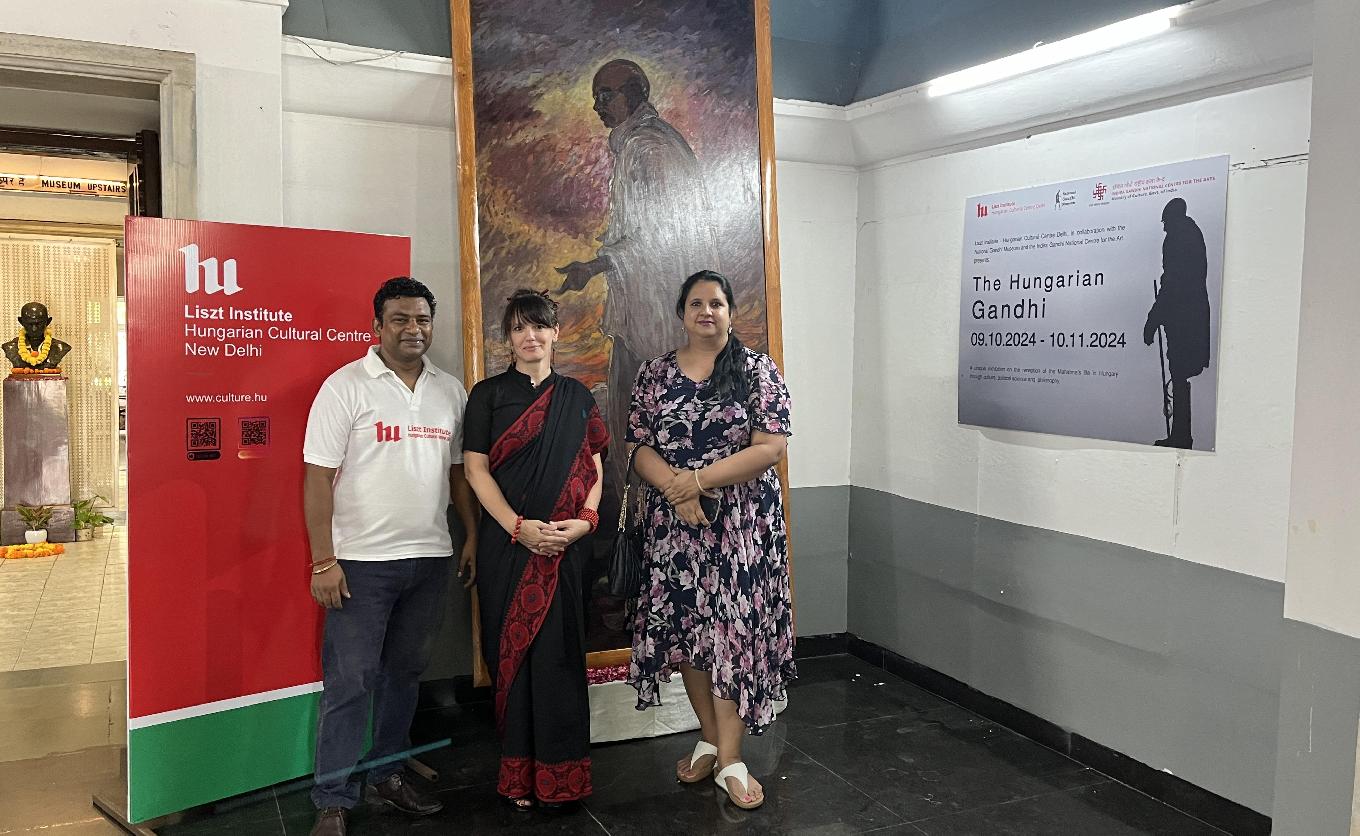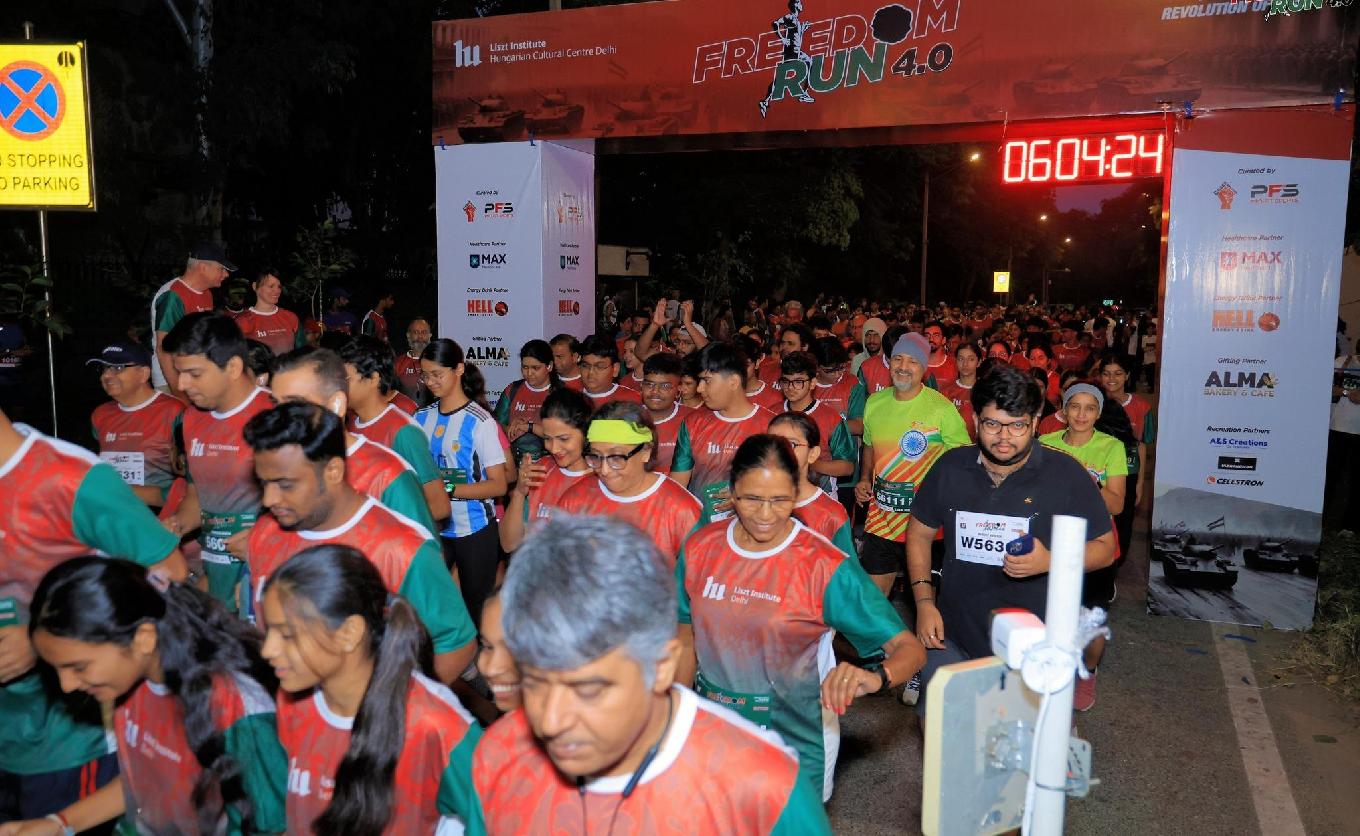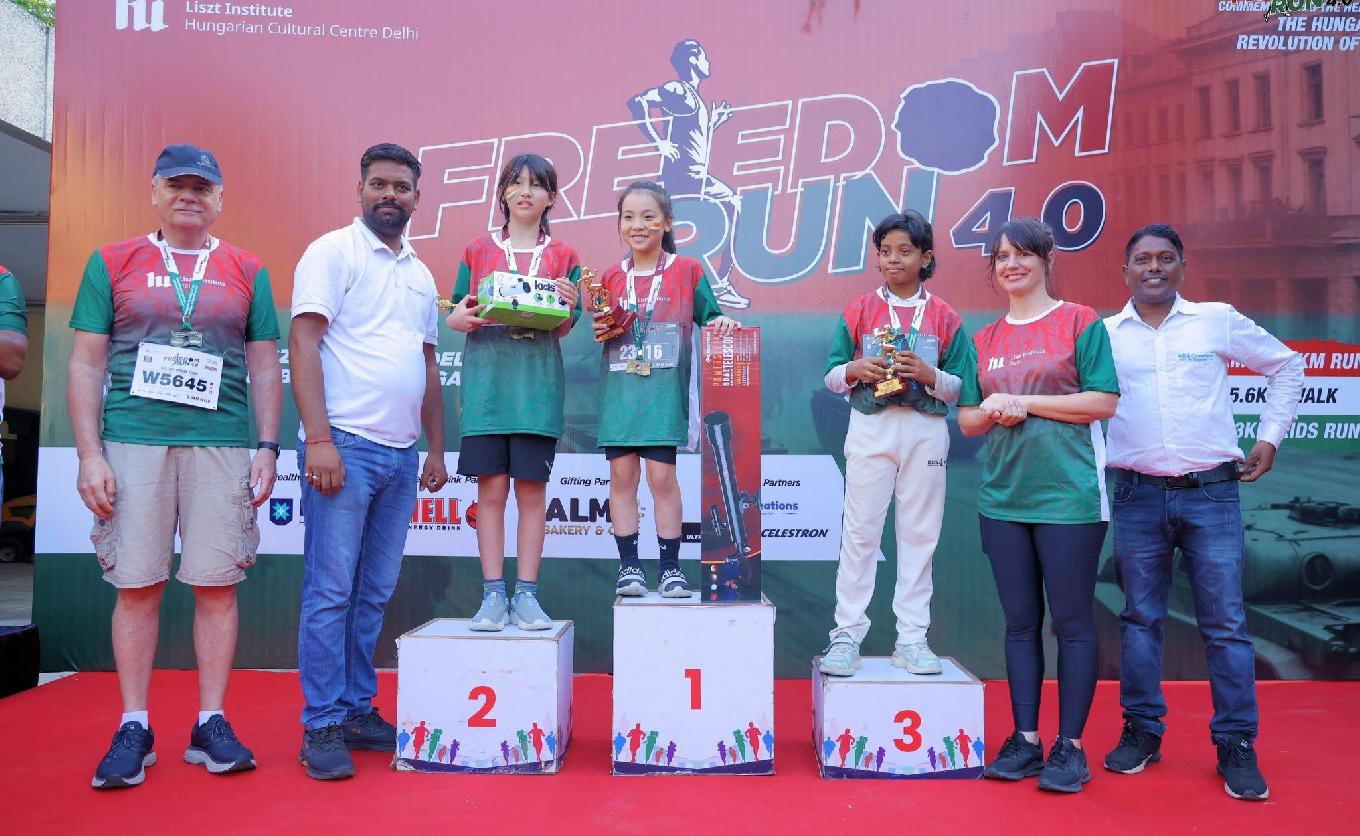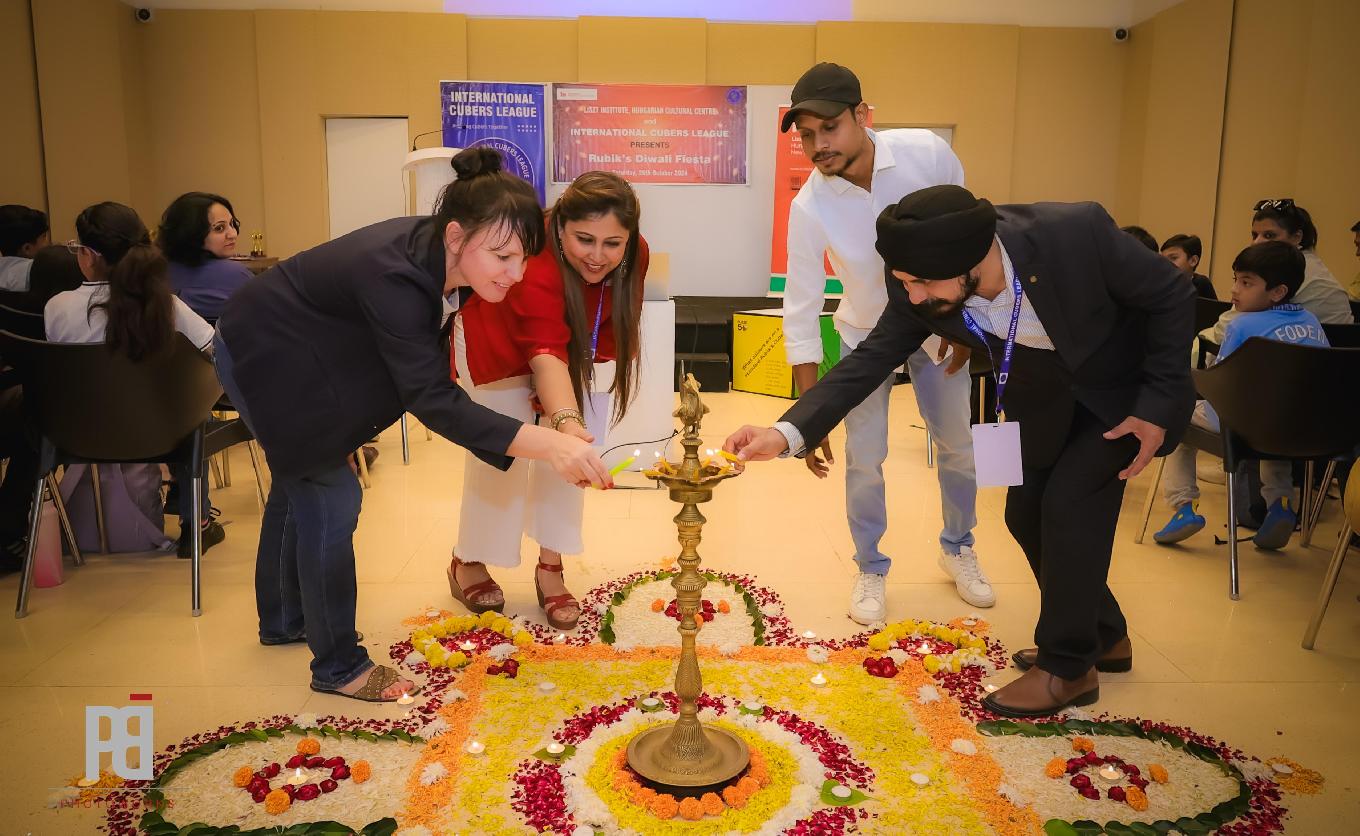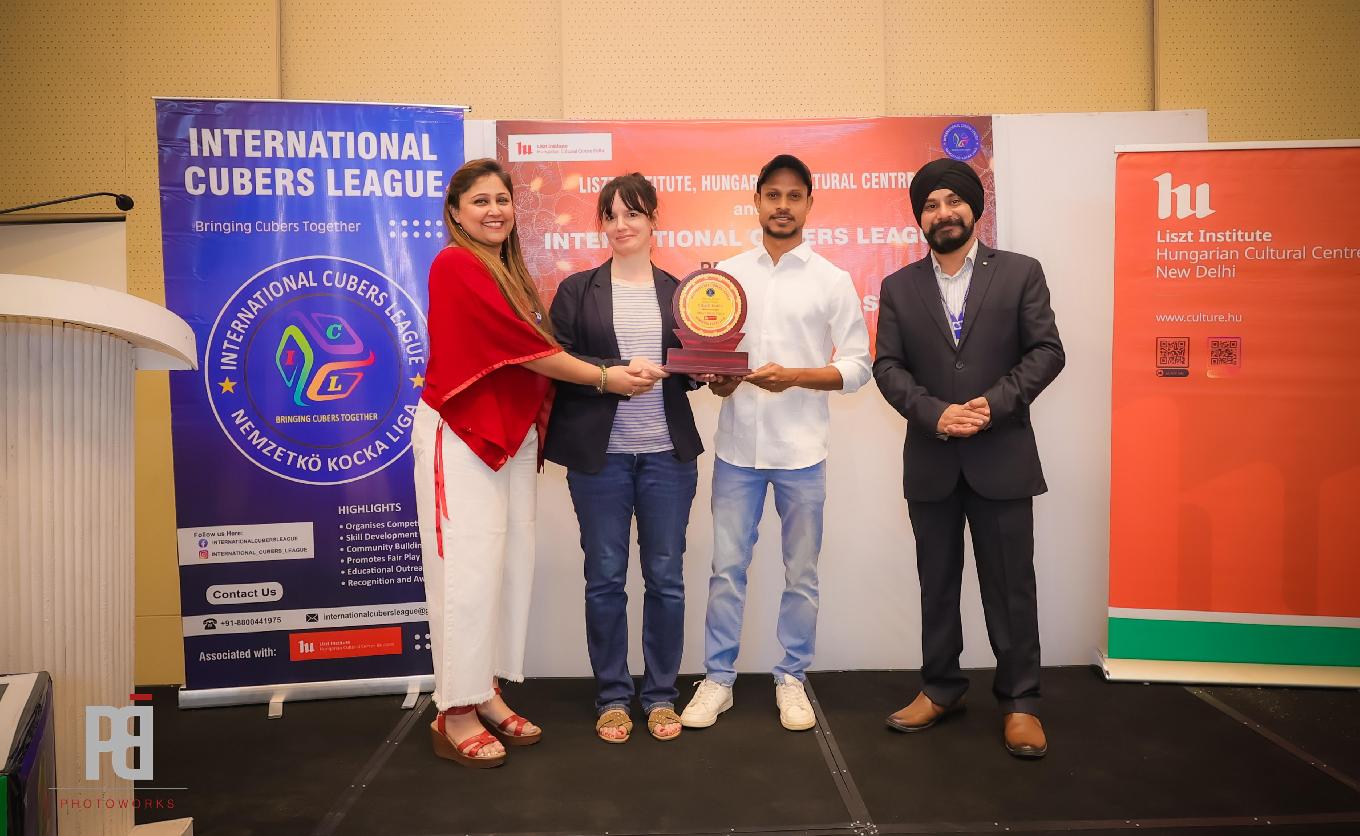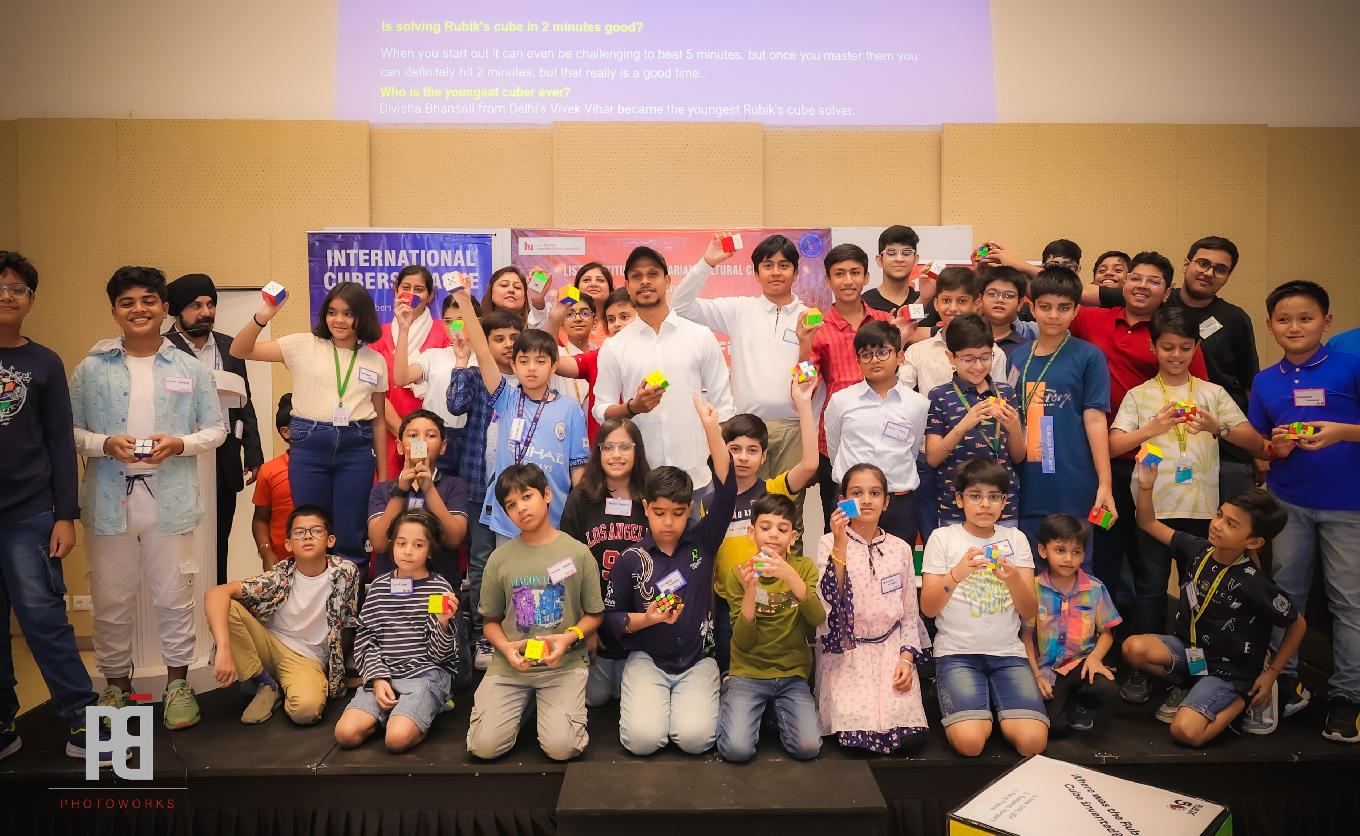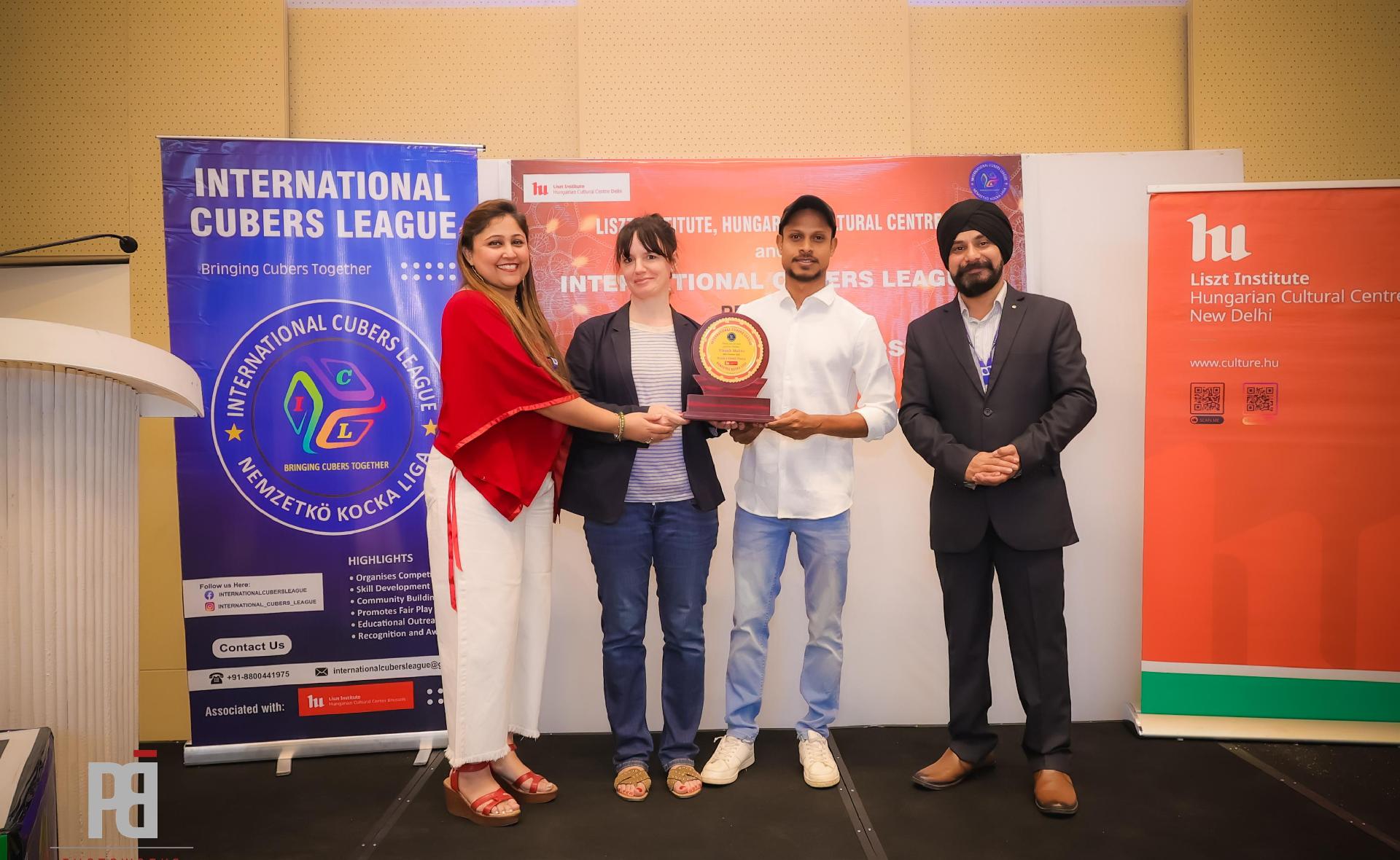
Mahatma Gandhi Exhibition, Freedom Run Race and Rubik's Cube Championship in Delhi
The Delhi Liszt Institute presented a unique exhibition titled "The Hungarian Gandhi" at the National Gandhi Museum in Delhi and organized its now-traditional 1956 commemoration event, along with the popular Freedom Run race. The busy week concluded with a Rubik's Cube championship, which will be followed by a biweekly Rubik's Cube club at the Delhi Liszt Institute in the future.
The exhibition offers insight into the reception of Mahatma Gandhi's legacy in Hungary. The 32-panel display presents the reactions of Hungarian literature, visual arts, political science, and the press over the past 100 years. The curator of the exhibition was Mariann Erdő, the director of the Liszt Institute. The opening ceremony began with the lighting of lamps, following Indian traditions, after which the guests moved to the exhibition hall, where Mariann Erdő gave a guided tour for those interested. In her speech, she discussed the friendship between Ervin Baktay and Gandhi, the influence of Ferenc Deák and passive resistance on Gandhi, the activities of the Gandhi Gymnasium in Pécs, and the special relationship between the mother-daughter artist duo Erzsébet Sass, Erzsébet Brunner, and Mahatma Gandhi. The program continued with a scholarly discussion, during which Dr. Dezső Szenkovics, the Dean of the Faculty of Humanities at Sapientia University in Transylvania, delivered a lecture titled "The Perception of Gandhi in Hungary." The event was attended by numerous researchers and university students, who praised the novelty of the exhibition and the engaging nature of the lecture. The exhibition was open until 12 November, but the Institute plans to showcase it in several major cities across India.
The Institute held its 4th annual commemoration of 1956 with the Freedom Run race. This year, nine hundred people registered, which is clear evidence of the growing popularity of the event year by year. Participants of all ages took part in the 10 km, 5.6 km, and 2.3 km runs and walks, reflecting the spirit of the revolution. The youngest and oldest age groups were equally represented. Thanks to the Institute, competitors received a specially designed t-shirt and medal, a runner's kit, and a timing chip. As usual, the program started at 5:30 AM with a welcome speech and warm-up session led by Mariann Erdő, the director of the Institute. Ambassador István Szabó and Mariann Erdő kicked off the three race categories. After the race, participants could join a fitness test, a telescopic demonstration, and a health assessment. The top three winners in each category received a gift package with a trophy, thanks to the support of Alma Bakery and Celestron.
The Delhi Liszt Institute, in collaboration with the International Cubers League, organized a joint Rubik's Cube championship on 26 October. The 50 spots announced in advance were filled within a single day. The competition featured four age groups and five different cube categories. In line with Indian traditions, the event began with the lighting of lamps, followed by welcome speeches from Mariann Erdő, the director of the Liszt Institute, and Anshil Srivastava, the head of the International Cubers League, who greeted the participants and their parents. During the competition, Vikash Matho, an Indian Rubik's Cube trainer, taught participants various cube tricks, while in the Institute's garden, colorful cube Rangoli was created, and children had the chance to paint Diwali-themed team coasters to take home. During the event, Mariann Erdő announced that, following the opening of the Institute's new building, they plan to hold a biweekly Rubik's Cube club.
Photo by PHOTOWORKS

